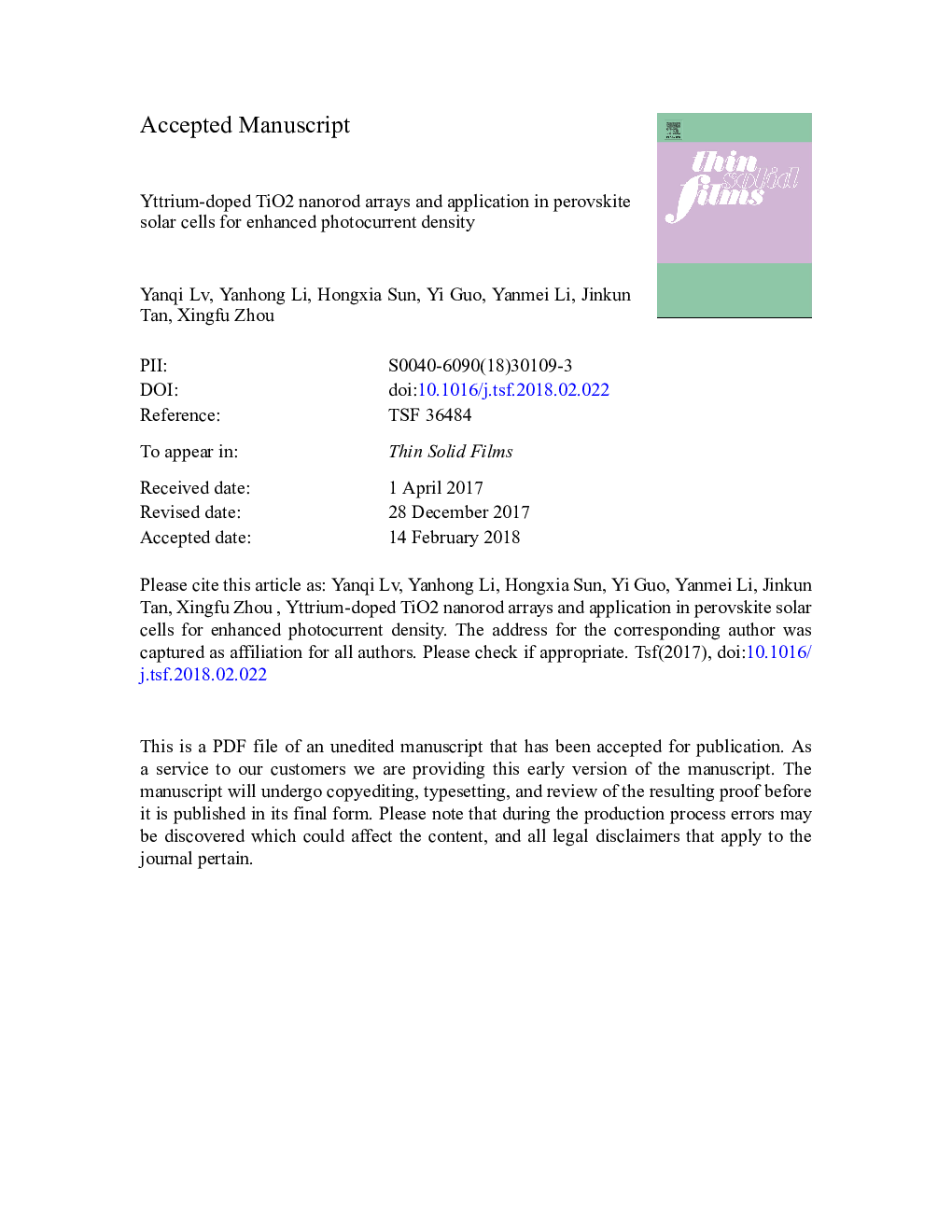| Article ID | Journal | Published Year | Pages | File Type |
|---|---|---|---|---|
| 8032819 | Thin Solid Films | 2018 | 24 Pages |
Abstract
Crystalline yttrium-doped rutile TiO2 nanorod arrays were synthesized and successfully implemented as a photoanode of perovskite solar cells. Study shows that yttrium was successfully doped and TiO2 band gap changes from 3.07â¯eV to 3.02â¯eV. A positive shift of 100â¯mV in the flat-band potential (Vfb) was observed in Y-doped rutile TiO2 nanorods. A power conversion efficiency of 7.95% and a photocurrent density of 15.13â¯mA/cm2 were obtained for the doped sample. The photocurrent density is 1.47 times higher than that of the un-doped device. Incident photon-to-current conversion efficiency shows Y-doped device has a clear increase in quantum efficiency in the visible light range from 450 and 750â¯nm. Open circuit voltage decay measurements demonstrate the superior ability of Y-doped TiO2 nanorod for separating electrons and holes and decreasing the recombination events. The improved performance is possibly attributed to the enhanced electron injection and transfer efficiency caused by a positive shift in Vfb and a reduction in charge recombination. This study opens a door toward the improvement of photocurrent density of perovskite solar cell via an element doping route.
Related Topics
Physical Sciences and Engineering
Materials Science
Nanotechnology
Authors
Yanqi Lv, Yanhong Li, Hongxia Sun, Yi Guo, Yanmei Li, Jinkun Tan, Xingfu Zhou,
